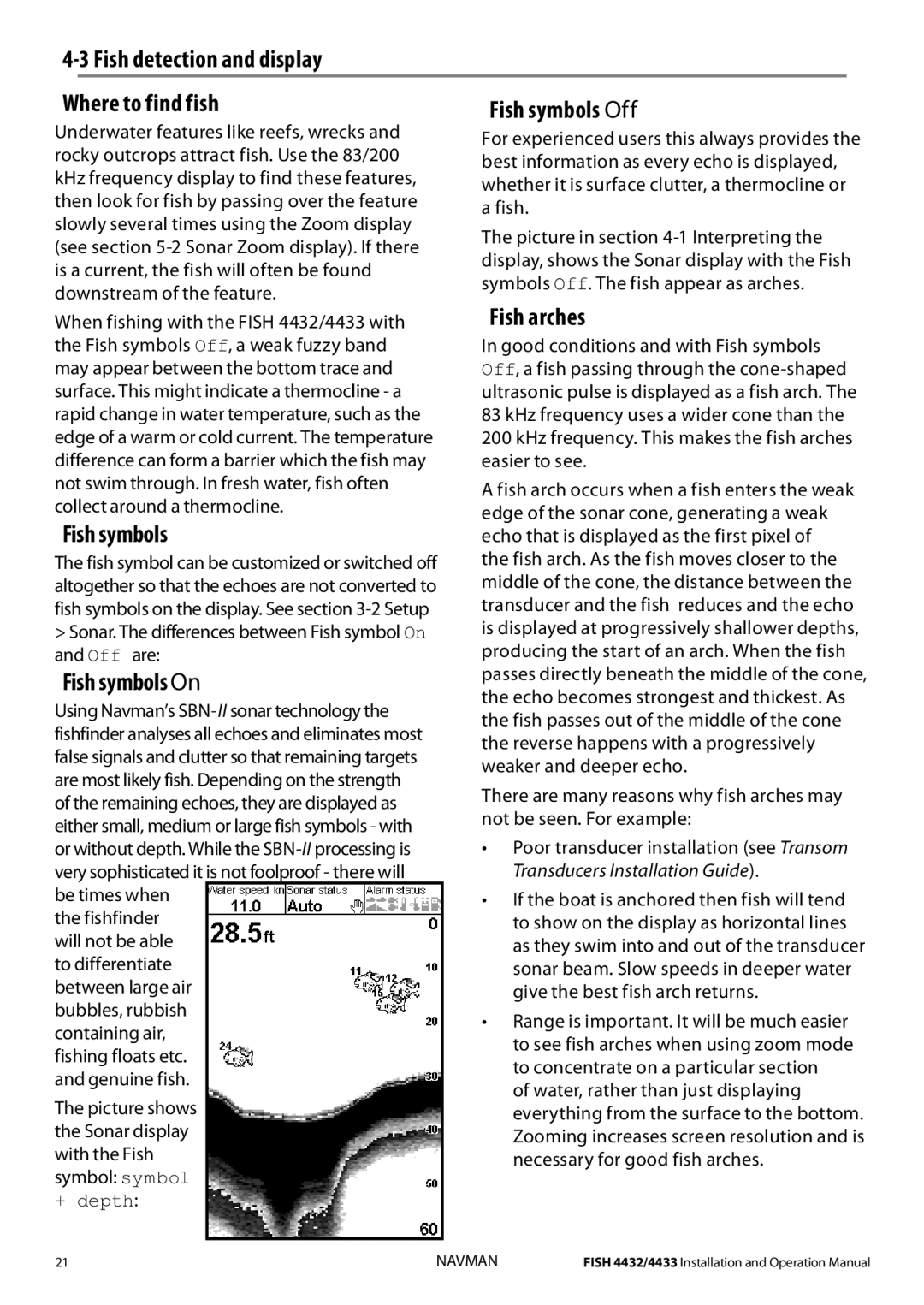
4-3 Fish detection and display
Where to find fish | Fish symbols Off |
Underwater features like reefs, wrecks and rocky outcrops attract fish. Use the 83/200 kHz frequency display to find these features, then look for fish by passing over the feature slowly several times using the Zoom display (see section
When fishing with the FISH 4432/4433 with the Fish symbols Off, a weak fuzzy band may appear between the bottom trace and surface. This might indicate a thermocline - a rapid change in water temperature, such as the edge of a warm or cold current. The temperature difference can form a barrier which the fish may not swim through. In fresh water, fish often collect around a thermocline.
Fish symbols
The fish symbol can be customized or switched off altogether so that the echoes are not converted to fish symbols on the display. See section
>Sonar. The differences between Fish symbol On and Off are:
Fish symbols On
Using Navman’s
the fishfinder will not be able to differentiate between large air bubbles, rubbish containing air, fishing floats etc. and genuine fish.
The picture shows the Sonar display with the Fish symbol: symbol + depth:
For experienced users this always provides the best information as every echo is displayed, whether it is surface clutter, a thermocline or a fish.
The picture in section
Fish arches
In good conditions and with Fish symbols Off, a fish passing through the
A fish arch occurs when a fish enters the weak edge of the sonar cone, generating a weak echo that is displayed as the first pixel of the fish arch. As the fish moves closer to the middle of the cone, the distance between the transducer and the fish reduces and the echo is displayed at progressively shallower depths, producing the start of an arch. When the fish passes directly beneath the middle of the cone, the echo becomes strongest and thickest. As the fish passes out of the middle of the cone the reverse happens with a progressively weaker and deeper echo.
There are many reasons why fish arches may not be seen. For example:
•Poor transducer installation (see Transom Transducers Installation Guide).
•If the boat is anchored then fish will tend to show on the display as horizontal lines as they swim into and out of the transducer sonar beam. Slow speeds in deeper water give the best fish arch returns.
•Range is important. It will be much easier to see fish arches when using zoom mode to concentrate on a particular section
of water, rather than just displaying everything from the surface to the bottom. Zooming increases screen resolution and is necessary for good fish arches.
21 | NAVMAN | FISH 4432/4433 Installation and Operation Manual |
